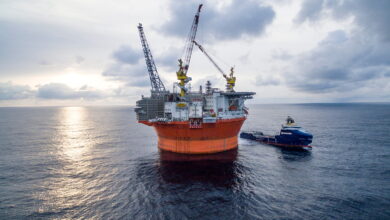Vår Energi makes discovery near Fenja field, Norwegian Sea

Vår Energi made a new commercial gas and condensate discovery in the Vidsyn exploration well, located close to the Vår Energi-operated Fenja field in the Norwegian Sea. The discovery is the third commercial discovery for Vår Energi so far in 2025 and will be evaluated as a potential tie-in to Fenja.
The discovery was made on the Vidsyn ridge, which has the potential to hold up to 100 million barrels of oil equivalent (boe) gross. The Vidsyn well confirms discovered recoverable resources in the range of 25 to 40 million boe gross, which are considered commercial. The remaining potential of the ridge will be assessed through an appraisal program to facilitate a fast track development.
The well encountered very good quality reservoirs with over 200 m of hydrocarbon column. The discovery is located updip of a previous exploration well, providing a clear framework confirming commerciality and supporting further evaluation of the broader Vidsyn ridge. The reservoir contains high quality gas-condensate only 8 km from the existing Fenja subsea infrastructure, which is tied into the Njord host facility.




